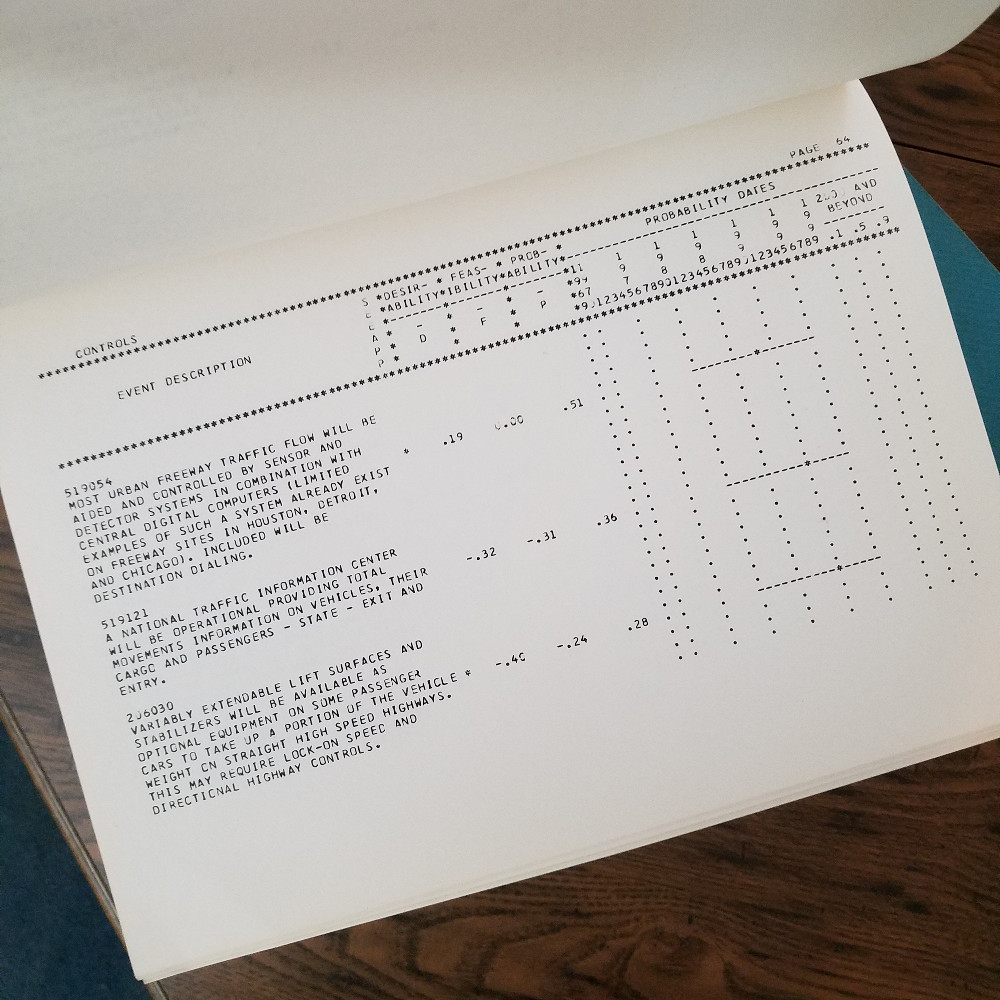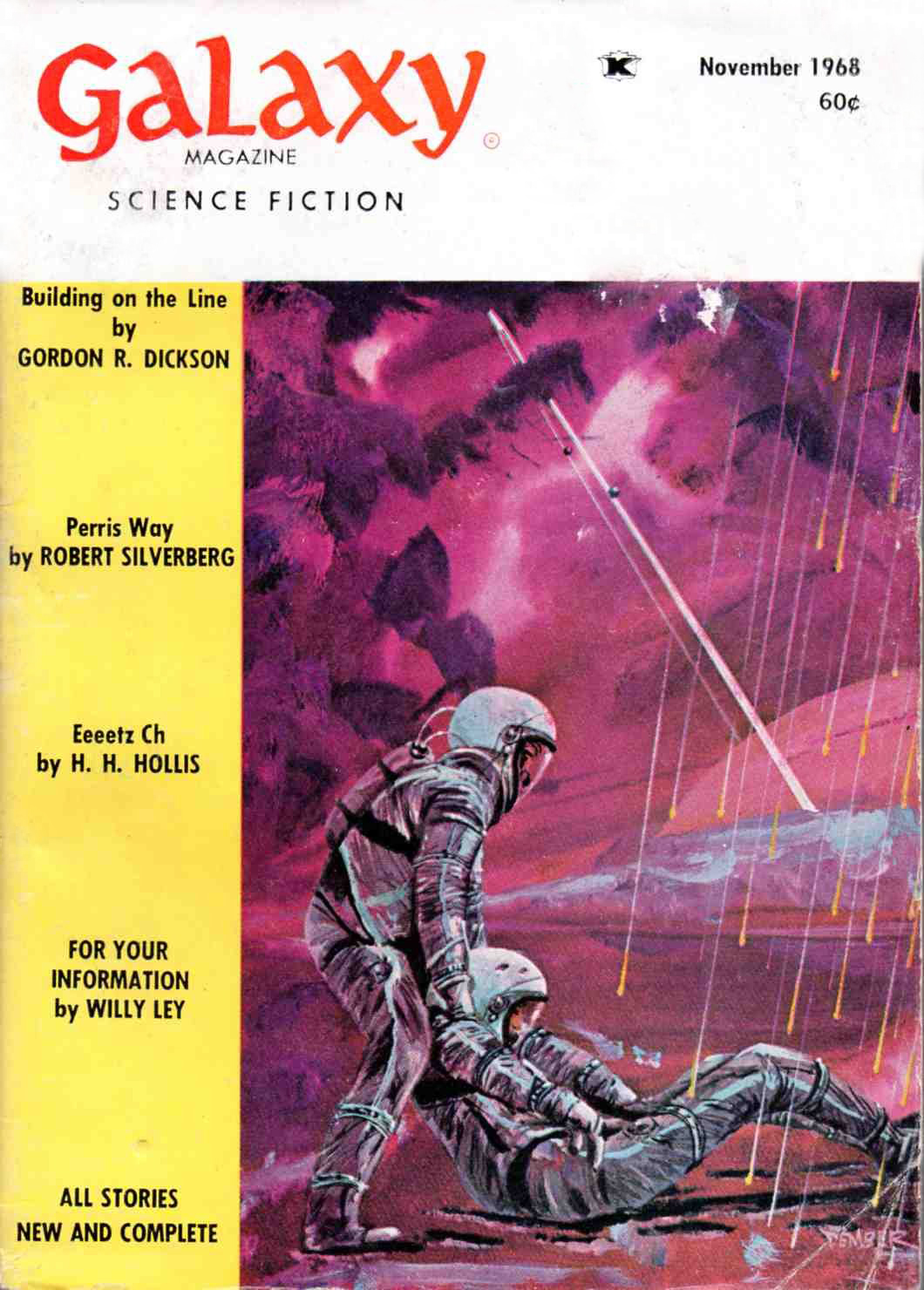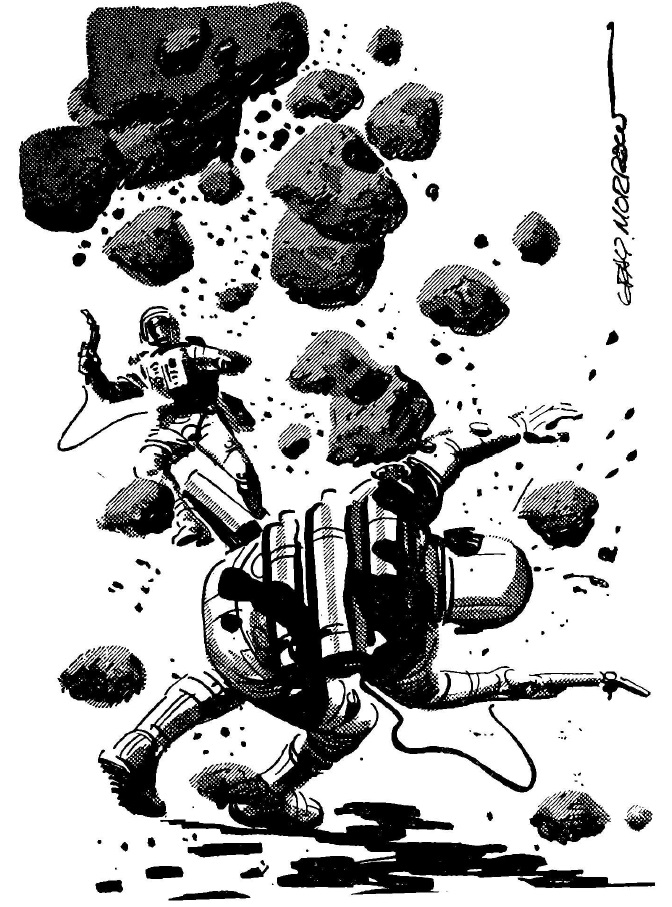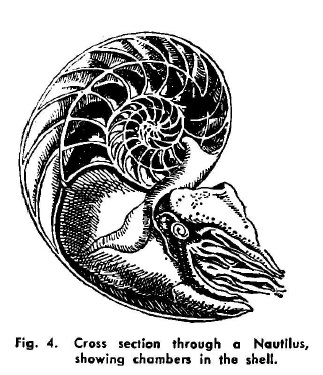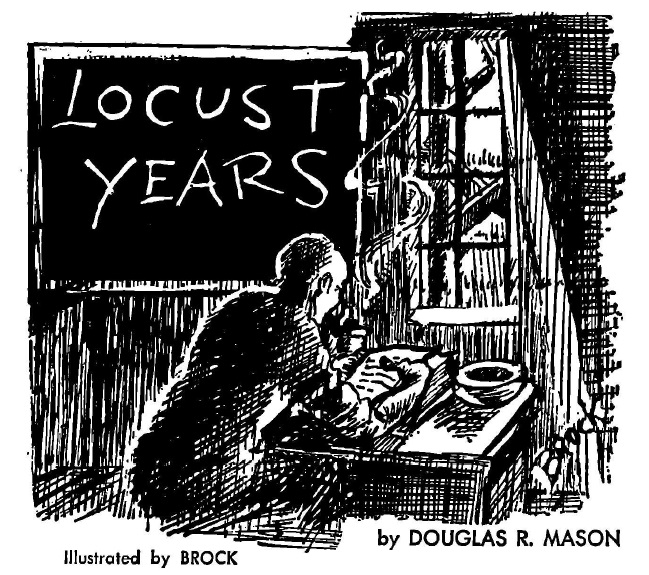
by Kaye Dee
In early October Wernher von Braun said that he was “beginning to doubt” America's ability to land an astronaut on the Moon before the Russians, following the Soviet success with its automated Zond-5 mission. But speaking just a few days ago, General Sam Phillips, the Apollo Programme Manager, has described the recently completed Apollo-7 flight as “a perfect mission. We accomplished 101 percent of our objectives”. With both the United States and the Soviet Union finally back in space following the tragedies that struck their respective space programmes in 1967 (an article on Soyuz-2 and 3 is coming soon), NASA has risen from the ashes of the Apollo-1 fire and is once again on track to achieve its manned lunar landing goals.
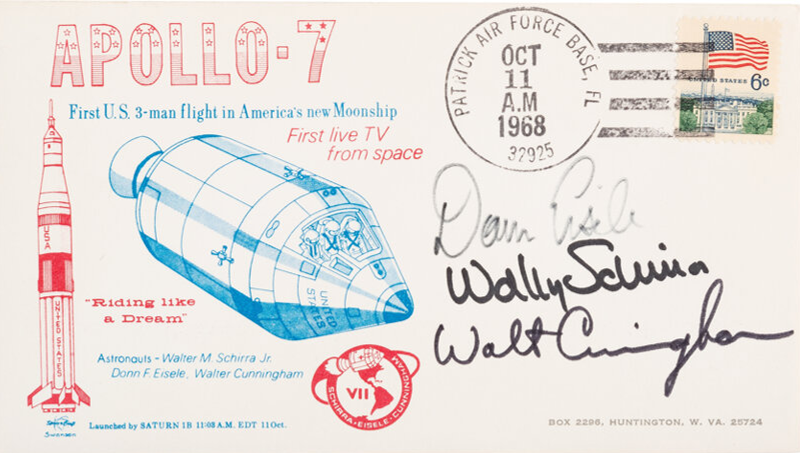
A Critical Test Flight
Possibly no NASA mission has been more critical to the future of US spaceflight than Apollo-7. The main purpose of the mission has been to prove that the new Block II Apollo spacecraft, extensively redesigned after the Apollo-1 fire, is capable of performing the 480,000-mile round trip to the Moon. If Apollo-7 did not establish the overall safety and performance of the new CM design, von Braun’s pessimism would probably be proved right!
The four critical mission objectives were:
- test the spacecraft’s navigation and guidance systems in the performance of an orbital rendezvous;
- prove the Service Propulsion System (SPS) engine’s performance and reliability;
- demonstrate the safety of the redesigned Command Module (CM) and the performance of its life support systems over the duration of a lunar mission; and,
- carry out a precise re-entry and splashdown.
 The Apollo-7 crew. L – R: LM Pilot Walter Cunningham, CM Pilot Maj. Donn Eisele and mission commnader Capt. Wally Schirra. They were rarin' to go!
The Apollo-7 crew. L – R: LM Pilot Walter Cunningham, CM Pilot Maj. Donn Eisele and mission commnader Capt. Wally Schirra. They were rarin' to go!The First Team
With a lot riding on their shoulders, the crew of the first successful manned Apollo mission unusually combined a seasoned veteran astronaut with two rookies. Originally the back-up crew for Apollo-1, the three astronauts of Apollo-7 all have US Navy connections.
Mission commander Navy Captain Walter (Wally) Schirra, 45, is the oldest man to make a spaceflight so far. One of the original Mercury astronauts (MA-8 Sigma-7, 1962), he was also the Command Pilot for the Gemini-6 mission in 1965. Apollo-7 makes Schirra the first astronaut to fly all three types of US manned spacecraft. Rumour has it that Capt. Schirra was not particularly interested in making a third spaceflight prior to the loss of Apollo 1 but stepped up to the challenge of ensuring that Apollo-7 was a success in honour of his lost friend, Apollo-1 Commander Gus Grissom. This seems to be borne out by the fact that he announced his intention to resign from NASA two weeks before the launch of his flight.
 Apollo-7’s two rookie astronauts both come from Group 3, selected in 1963. 38-year-old Major Donn Eisele (USAF), designated Command Module Pilot, graduated from the US Naval Academy but was commissioned in the Air Force. Originally slated as a member of the Apollo-1 crew, he was switched to the back-up team due to a shoulder injury. Major Eisele has specialised in the CM’s new digital guidance and navigation computer, which is vital for conducting rendezvous during lunar missions.
Apollo-7’s two rookie astronauts both come from Group 3, selected in 1963. 38-year-old Major Donn Eisele (USAF), designated Command Module Pilot, graduated from the US Naval Academy but was commissioned in the Air Force. Originally slated as a member of the Apollo-1 crew, he was switched to the back-up team due to a shoulder injury. Major Eisele has specialised in the CM’s new digital guidance and navigation computer, which is vital for conducting rendezvous during lunar missions. Mr. Walter Cunninham, 36, is a civilian scientist with a military background. Nominally the Lunar Module Pilot (even though Apollo 7 did not carry a LM), he assumed the role of the crew’s general systems expert on this flight. With a Master’s degree in physics, Mr. Cunnigham spent three years as a physicist at the RAND Corporation before becoming an astronaut, but he is also a former Marine pilot who saw service in Korea and currently a Major in the Marine Corps reserves.
Symbolising a Test Flight
 Apollo-7’s mission patch was designed by North American Rockwell artist Allen Stevens, who also created the Apollo-1 patch. Its similar design to the earlier patch depicts an Apollo Command Service Module (CSM) circling the globe trailing a tail of orange flame – a reference to the test firings of the CSM’s SPS engine. The navy-blue background symbolises the depths of space: it’s also a nod to the Navy background of the crew. Centred in the design, North and South America are flanked by blue oceans, with a Roman numeral VII appearing in the Pacific Ocean region. The crew’s names appear around the patch’s lower rim.
Apollo-7’s mission patch was designed by North American Rockwell artist Allen Stevens, who also created the Apollo-1 patch. Its similar design to the earlier patch depicts an Apollo Command Service Module (CSM) circling the globe trailing a tail of orange flame – a reference to the test firings of the CSM’s SPS engine. The navy-blue background symbolises the depths of space: it’s also a nod to the Navy background of the crew. Centred in the design, North and South America are flanked by blue oceans, with a Roman numeral VII appearing in the Pacific Ocean region. The crew’s names appear around the patch’s lower rim. Although refused permission by NASA, Capt. Schirra apparently wanted to name his ship “Phoenix”. I can’t help wondering what mission patch design we would have seen had the name been allowed. We do know, however, what the patch would have looked like (as envisioned by the daughter of backup Commander Tom Stafford) if Eisele's whimsical name "Rub-a-dub-dub" had been adopted…

A Safer Spacecraft
Apollo-1’s CM was a Block I type, designed for Earth orbital missions, while Apollo-7 has been a shakedown test for the redeveloped Block II Command Module specifically designed for lunar voyages and able to dock with a Lunar Module (LM). Following the fire, the Block II CM was significantly redesigned to reduce or eliminate fire hazards (especially the use of flammable materials) and increase astronaut safety: many of these modifications, particularly a fully-redesigned quick-opening crew hatch for emergency escape from the spacecraft, were tested on the unmanned Apollo-4 and 6 flights. Emergency breathing masks and a fire extinguisher were also added to the cabin.
 Experiments with starting fires in the redesigned cabin have also led to another crew safety enhancement: NASA now uses a 60/40 oxygen/nitrogen atmosphere in the CM during launch, before switching to a lower pressure pure oxygen inflight environment about four hours after lift-off. The astronauts’ spacesuits, and their new casual flight suits, have also been redeveloped using fire retardant materials.
Experiments with starting fires in the redesigned cabin have also led to another crew safety enhancement: NASA now uses a 60/40 oxygen/nitrogen atmosphere in the CM during launch, before switching to a lower pressure pure oxygen inflight environment about four hours after lift-off. The astronauts’ spacesuits, and their new casual flight suits, have also been redeveloped using fire retardant materials.
Luxury Accommodation
Compared to NASA’s previous Mercury and Gemini spacecraft, the Apollo CM is a luxury suite, its greater interior volume allowing the crew to move around freely in zero gravity. Beneath the flight couches, where the crew sit for launch and re-entry, there is room for “sleeping quarters”, where two astronauts can zip themselves into sleeping bags underneath their flight seats to keep from floating around.
 With ample water provided by its fuel cells, and new food preparation and packaging techniques, the Block II spacecraft finally gives NASA’s astronauts the opportunity to enjoy hot meals! The CM provides both hot and cold water dispensers to rehydrate food packages. Capt. Schirra, a coffee lover, enjoyed his first pouch of inflight instant brew just five hours after launch!
With ample water provided by its fuel cells, and new food preparation and packaging techniques, the Block II spacecraft finally gives NASA’s astronauts the opportunity to enjoy hot meals! The CM provides both hot and cold water dispensers to rehydrate food packages. Capt. Schirra, a coffee lover, enjoyed his first pouch of inflight instant brew just five hours after launch!
The expanded Apollo flight menu now offers some 60 different food choices, not all of which are dehydrated. Thermostabilisng techniques allow some foods, like frankfurters, to be eaten in their natural state, while small slices of bread, covered in a coating to prevent them crumbling, can now be enjoyed – although judging by the Apollo-7 crew’s complaints about crumbly food, this may not have been entirely successful.
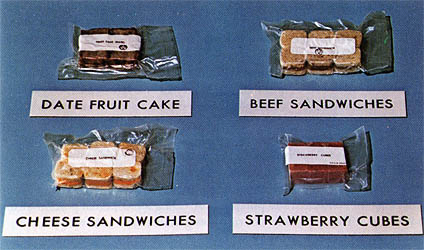 Some of the new bite-size, possibly crumbly, foods available to Apollo astronauts
Some of the new bite-size, possibly crumbly, foods available to Apollo astronauts
Bending the Rules
On 11 October (US time), almost four years to the day after the launch of the three-man Voskhod-1 spacecraft, Apollo-7 lifted off from Cape Kennedy Air Force Station's Launch Complex 34 on its crucial test flight. Since the LM is still not ready for spaceflight, and so could not be tested during this mission, a Saturn 1B lofted the mission into orbit.
High-altitude winds threatened to scrub the lift-off, as a post-launch abort might have seen the CM blown back over land, instead of splashing down in the ocean, potentially exposing the crew to serious injury. Mission commander Schirra disagreed with the decision by NASA managers to waive the wind restriction, but finally yielded. However, his unhappiness over this issue may have contributed to his further disputes with Mission Control during the flight.
 Despite Schirra reporting the ride to space as “a little bumpy” a few minutes into the flight, ten minutes and 27 seconds after liftoff Apollo-7 was smoothly inserted into its elliptical low Earth orbit.
Despite Schirra reporting the ride to space as “a little bumpy” a few minutes into the flight, ten minutes and 27 seconds after liftoff Apollo-7 was smoothly inserted into its elliptical low Earth orbit.
Coming Together
Rendezvous and docking practice, demonstrating that the CM’s navigation and guidance systems could successfully handle this vital technique for lunar missions, was a major element of the Apollo-7 flight plan, and the first major exercise began within three hours after launch.
Although Apollo 7 was not carrying a Lunar Module, the Spacecraft-LM adapter (SLA) that would normally house one was mounted on top of the Saturn 1B’s S-IVB second stage, carried into orbit to be used as a rendezvous target.
With the S-IVB still attached to the CSM, the astronauts manoeuvred as if conducting the necessary engine burn for Trans Lunar Injection. After separation from the S-IVB, Schirra put his Gemini rendezvous experience to good use, manoeuvring Apollo-7 towards the rocket stage and closing in as if to dock. This simulated the manoeuvre needed to extract the LM from the SLA. He then flew in formation with the stage for 20 minutes, before moving about 76 miles away to prepare for the first practice rendezvous.
 Apollo-7's S-IVB stage, with the SLA petals open to reveal the docking target. The target was designed by Royal Australian Air Force opthalmologist, Dr. John Colvin. (note that one of the petals did not quite open all the way, restricting some of the possible maneuvers)
Apollo-7's S-IVB stage, with the SLA petals open to reveal the docking target. The target was designed by Royal Australian Air Force opthalmologist, Dr. John Colvin. (note that one of the petals did not quite open all the way, restricting some of the possible maneuvers)
Power and Precision
The initial rendezvous exercise, occurring about 30 hours after launch, included the first inflight test of the Service Module’s powerful Service Propulsion System engine. Although tested on the ground, the SPS had never yet been fired in space, despite being vital to the success of a lunar mission: its 20,000 pounds of thrust is needed to slow the Apollo spacecraft into orbit around the Moon and propel it on its way back to the Earth. The SPS has to be totally reliable – it must work, every time.
 The purpose of the rendezvous itself was to demonstrate the CSM’s ability to match orbits with a LM returning from the lunar surface, or an aborted landing attempt, even without an operating onboard radar (which Apollo-7 lacked, though later missions will have one). The SPS rendezvous burns were computed at Mission Control, but the final manoeuvres to close on the S-IVB saw Major Eisele making observations with the CM’s telescope and sextant to compute the final burns using the onboard guidance computer.
The purpose of the rendezvous itself was to demonstrate the CSM’s ability to match orbits with a LM returning from the lunar surface, or an aborted landing attempt, even without an operating onboard radar (which Apollo-7 lacked, though later missions will have one). The SPS rendezvous burns were computed at Mission Control, but the final manoeuvres to close on the S-IVB saw Major Eisele making observations with the CM’s telescope and sextant to compute the final burns using the onboard guidance computer.
When the SPS engine ignited for the first time, Eisele was apparently startled by its violent jolt, while Schirra yelled excitedly “Yabba Dabba Do! – That was a ride and a half!” The inaugural nine-second burn went perfectly, and Schirra completed the rendezvous using the ship's reaction control system (RCS) thrusters, bringing Apollo-7 to within 70 feet of its tumbling target. The exercise successfully demonstrated that, even without radar data, an Apollo Command Module pilot could effect a rendezvous in lunar orbit.
A (Mostly) Smooth Mission
For the most part, Apollo -7 could be described as a “smooth” mission, with few real technical problems. The flight plan was “front-loaded”, with the most important experiments and activities scheduled for the early part of the mission, in case problems forced an early return to Earth. By day five of the mission, Flight Director Glynn Lunney estimated that the astronauts had already accomplished 70 to 75 percent of the planned test objectives.
The SPS engine was fired eight times in total, working perfectly every time and proving its reliability. The crew tested the fuel cells and battery chargers and checked out the cooling capacity of the thermal control system, putting the CSM into “barbecue mode,” rolling slowly around its long axis to distribute the heat load evenly over the spacecraft skin. Major Eisele thoroughly tested the sextant, telescope and guidance computer: even when vented, frozen urine crystals obscured his star targets, he proved that the optical instruments could provide sightings accurate enough to steer a spacecraft to and from the Moon.
 It obviously wasn't easy for Maj. Eisele to take star sightings during the rendezvous exercise!
It obviously wasn't easy for Maj. Eisele to take star sightings during the rendezvous exercise!
But the mission did experience a few technical issues. A power failure briefly struck Mission Control abut 80 minutes after launch. A mysterious “fuzz” or fog partially obscured the spacecraft’s windows, blurring the external view, although it gradually eased as the mission progressed, enabling photographic observations of the Earth (there are early indications that this may have been due to window seals outgassing). Perhaps the most annoying problem was the difficulty of using the crew’s “solid waste disposal system” – bags taped to an astronaut’s buttocks into which he excreted. The process proved to be very messy and rather smelly!

 Despite issues with window fogging, the Apollo-7 crew has returned impressive images like these, showing the Gulf of Mexico (top) and Hurricane Gladys (bottom)
Despite issues with window fogging, the Apollo-7 crew has returned impressive images like these, showing the Gulf of Mexico (top) and Hurricane Gladys (bottom)
Grumpy Astronauts
About 15 hours into the flight, Schirra reported that he was experiencing a head cold. Unfortunately for him, a cold in space quickly becomes a miserable experience, because congested sinuses don’t drain in weightlessness. Cunningham and Eisele also developed stuffy noses and dry nostrils, but as they experienced colds a few days before the flight, flight surgeons believe that their condition may have been due more to breathing pure oxygen for long periods.
 An astronaut with a head cold is not a happy man!
An astronaut with a head cold is not a happy man!
Despite the use of aspirin and decongestant tablets, the cold made Schirra tired and irritable and prone to sharp exchanges with Mission Control. When Houston suggested early in the mission to add some new engineering tests into the already busy flight plan and power up the TV system ahead of schedule to check the circuits, the mission commander testily refused, citing scheduling pressures and the need for the crew to eat. Over the first few days, Schirra repeatedly delayed the scheduled public television broadcasts, considering them non-essential.
Throughout the flight, the crew had difficulty sleeping, particularly as NASA insisted that at least one astronaut was always on duty to monitor the new spacecraft’s systems during the crucial test flight. Lack of sleep and exhaustion from working long hours on a packed flight plan undoubtedly contributed to the crew’s irritability throughout the mission.
Are You a Turtle?
Capt. Schirra has a reputation for playing practical jokes and "gotchas" and decided at one point to take out his frustrations on fellow astronaut and Director of Flight Crew Operations Deke Slayton. Both men are members of a private club, which has a joking requirement that if one member asks another "Are you a turtle?" the person so asked must immediately respond with a specific vulgar reply, or else buy drinks for everyone who heard the question.
Slayton had tried to catch Schirra out during his Mercury flight by publicly asking on an open communication if Schirra was a turtle. The Apollo-7 commander decided to "return the favour" during this mission by mischievously holding up a card during the second television broadcast from the spacecraft that said "Deke Slayton, are you a turtle?" Slayton avoided giving the rude answer in a public broadcast by recording it to be played to the crew after the mission.
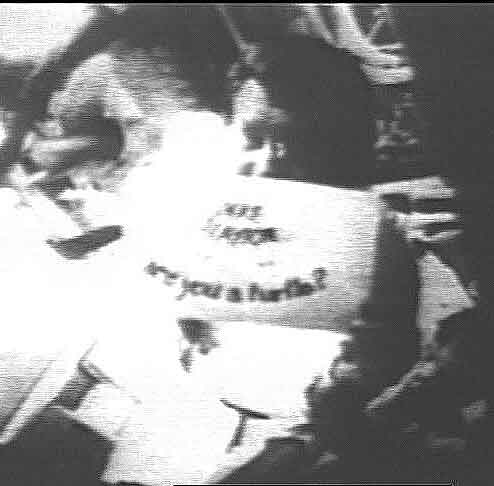
The Mission Commander is in Command!
Perhaps the most serious disagreement between Schirra and Mission Control arose over the issue of whether or not the astronauts would wear their space helmets during re-entry. During the descent from orbit, cabin pressure rises from 5.9 to 14.7 psi (sea level pressure). Still suffering from his head cold Capt. Schirra apparently feared a sealed helmet would prevent him from pinching his nostrils to equalise the pressure, possibly leading to a ruptured eardrum. Although helmets protect the astronauts from cabin depressurisation and landing impact forces, Schirra stood on his right to make a decision as the mission commander and insisted that the crew would not wear their helmets for re-entry.
The discussion between Apollo-7 and the ground became quite heated on this point. Although Mission Control finally acquiesced to Schirra’s decision, comments suggest that they were exasperated and surprised by the astronauts’ testiness throughout the mission, which was definitely a departure from the usual respectful communications between space and the ground. While Capt. Schirra may have been prepared to speak his mind and have his way because he has already decided to leave NASA and has nothing to lose, I wonder if the clashes between the crew and Mission Control will impact upon the careers of Major Eisele and Mr. Cunningham?
“From the Lovely Apollo Room”
Despite Schirra’s early refusal to conduct television tests, the crew became TV stars when the first live television broadcast from an American spacecraft finally occurred on 14 October. Technical limitations with the television system meant that the live broadcast was restricted to the United States, but the audience was reportedly treated to a lively piece of entertainment, with Cunningham as camera operator and Eisele as MC.
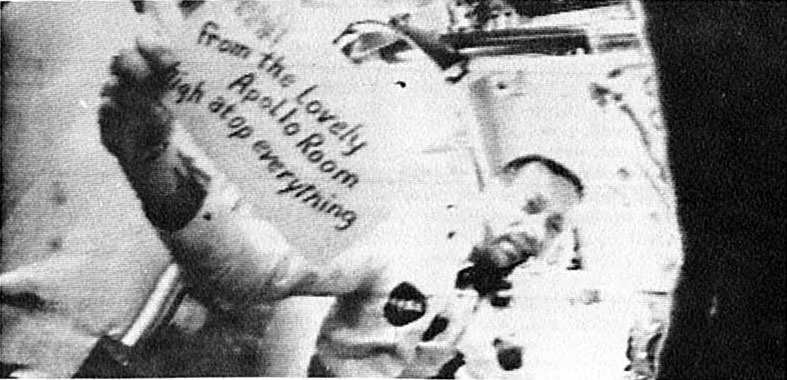
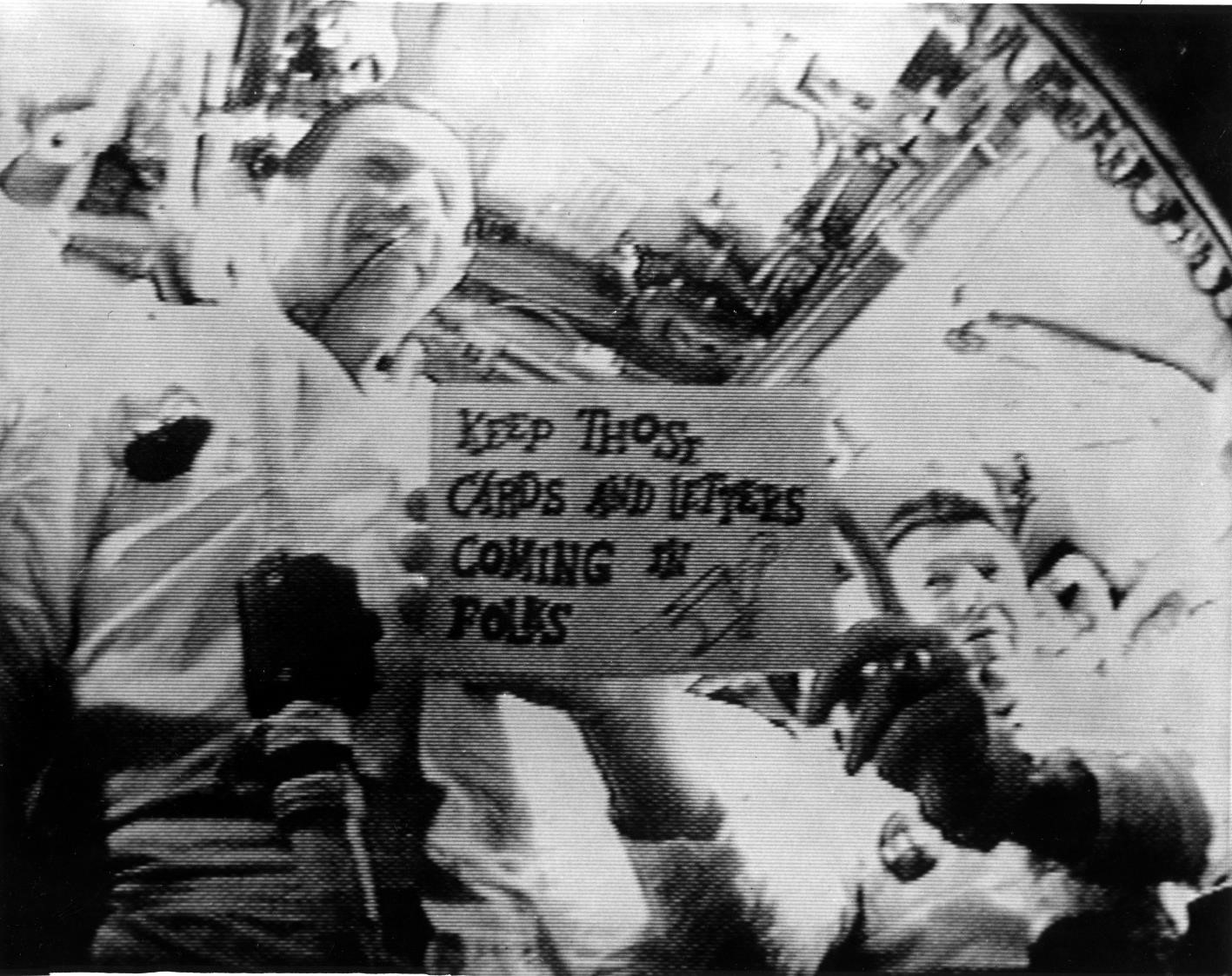 Drawing from an old radio tagline, the “Apollo-7 Show” opened with a card reading “From the lovely Apollo Room high atop everything”. The seven-minute broadcast treated viewers to a look inside the spacecraft and showed views of Lake Pontchartrain and New Orleans, before closing with Schirra holding up another sign reading “Keep those cards and letters coming in folks”, another radio tag line re-popularised by Dean Martin.
Drawing from an old radio tagline, the “Apollo-7 Show” opened with a card reading “From the lovely Apollo Room high atop everything”. The seven-minute broadcast treated viewers to a look inside the spacecraft and showed views of Lake Pontchartrain and New Orleans, before closing with Schirra holding up another sign reading “Keep those cards and letters coming in folks”, another radio tag line re-popularised by Dean Martin.
For the rest of the mission, daily television broadcasts of about 10 minutes each took place, with the crew holding up more fun signs and describing how the Apollo spacecraft worked. Since the broadcasts seem to have been very popular with audiences in America, I wonder if television’s newest stars might find themselves in line for an Emmy Award next year?
Back to Earth
Without the crew wearing helmets, Apollo 7 made a successful re-entry on 22 October splashing down about 200 nautical miles SSW of Bermuda, with a mission duration of 10 days, 20 hours, 9 minutes and 3 seconds. The conical CM landed upside down in the water, although it was soon righted with the use of floatation bags. However, the inverted position apparently interfered with communications, giving Mission Control an agonising 10-minute wait for contact to be established by search helicopters and aircraft.
 The astronauts’ arrival by helicopter on the recovery ship USS Essex was carried live to the world on television, relayed via satellite – although we here in Australia were not able to see most of the broadcast due to technical difficulties. Despite the issues with colds and stuffy noses, the crew experienced no trouble during re-entry and are said to be generally in good health. They are now back in Houston, facing three weeks of technical debriefings and medical tests.
The astronauts’ arrival by helicopter on the recovery ship USS Essex was carried live to the world on television, relayed via satellite – although we here in Australia were not able to see most of the broadcast due to technical difficulties. Despite the issues with colds and stuffy noses, the crew experienced no trouble during re-entry and are said to be generally in good health. They are now back in Houston, facing three weeks of technical debriefings and medical tests.
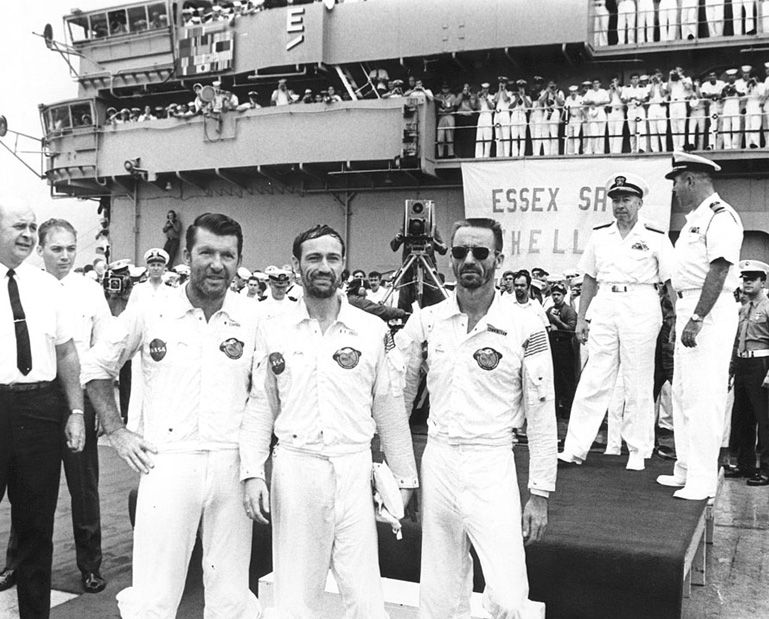 While the disagreements between the crew and Mission Control may have cast a shadow, Apollo-7 is being hailed as a technical triumph, with the mission successfully verifying the flightworthiness of the redesigned Command Module and SPS engine.
While the disagreements between the crew and Mission Control may have cast a shadow, Apollo-7 is being hailed as a technical triumph, with the mission successfully verifying the flightworthiness of the redesigned Command Module and SPS engine.
What comes next?
Even before Apollo-7 launched, Apollo Spacecraft Manager George Low proposed that, with the delays in the construction of the LM, Apollo-8 should be a manned circumlunar flight, to build programme momentum and pre-empt a possible similar mission by the USSR. This mission prospect was being openly discussed while Apollo-7 was in orbit. With its safe and successful return, let’s hope a decision will be made very soon on this ambitious and exciting next step in space exploration: Apollo-8 is already on the pad!



![[October 26, 1968] Phoenix from the Ashes (Apollo-7)](https://galacticjourney.org/wp-content/uploads/2023/10/Apollo-7-cover.jpg-672x372.png)
![[October 24, 1968] The New Wave comes to TV (<i>Star Trek</i>: "Is There in Truth No Beauty?")](https://galacticjourney.org/wp-content/uploads/2023/10/681024title-672x372.jpg)

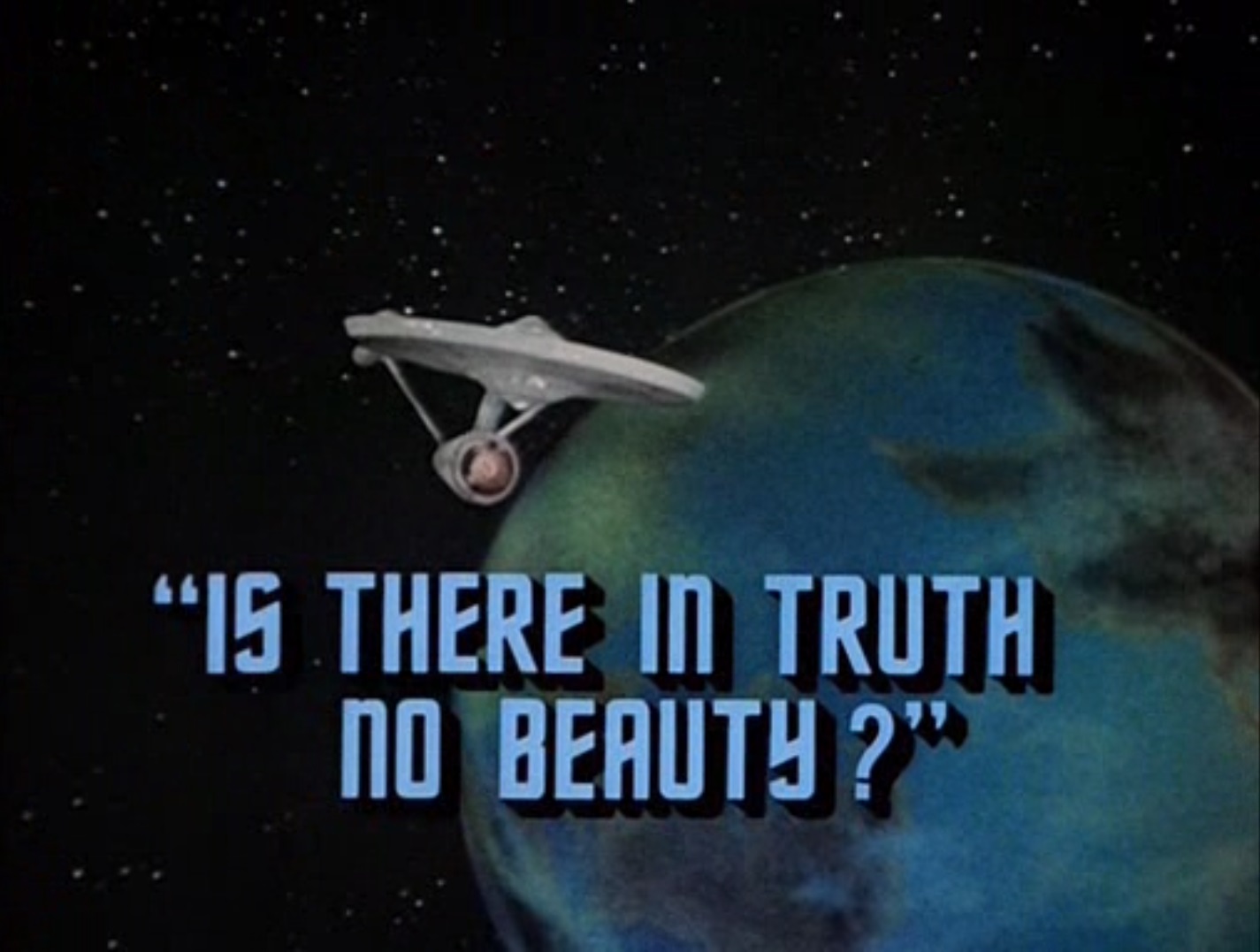
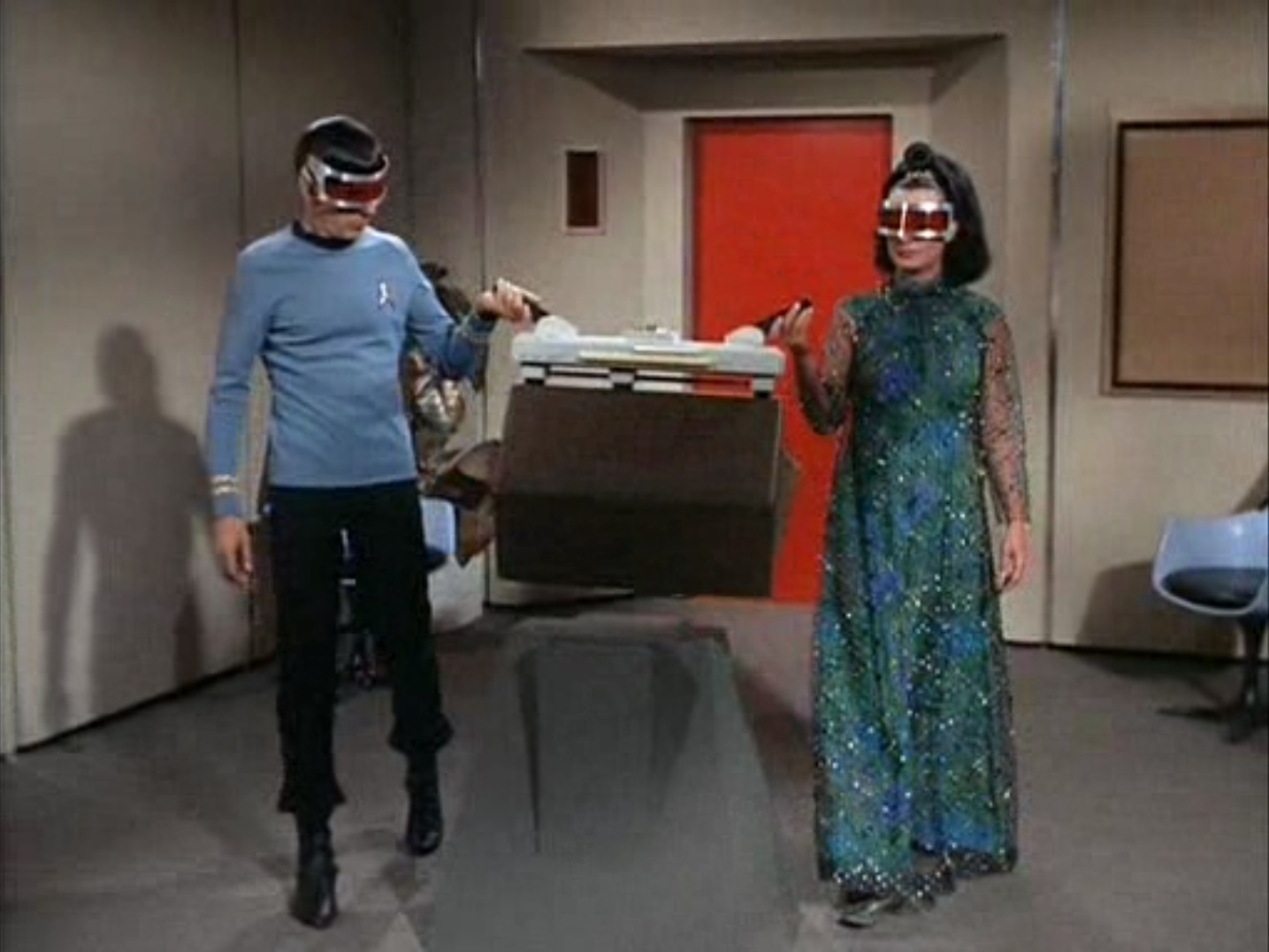
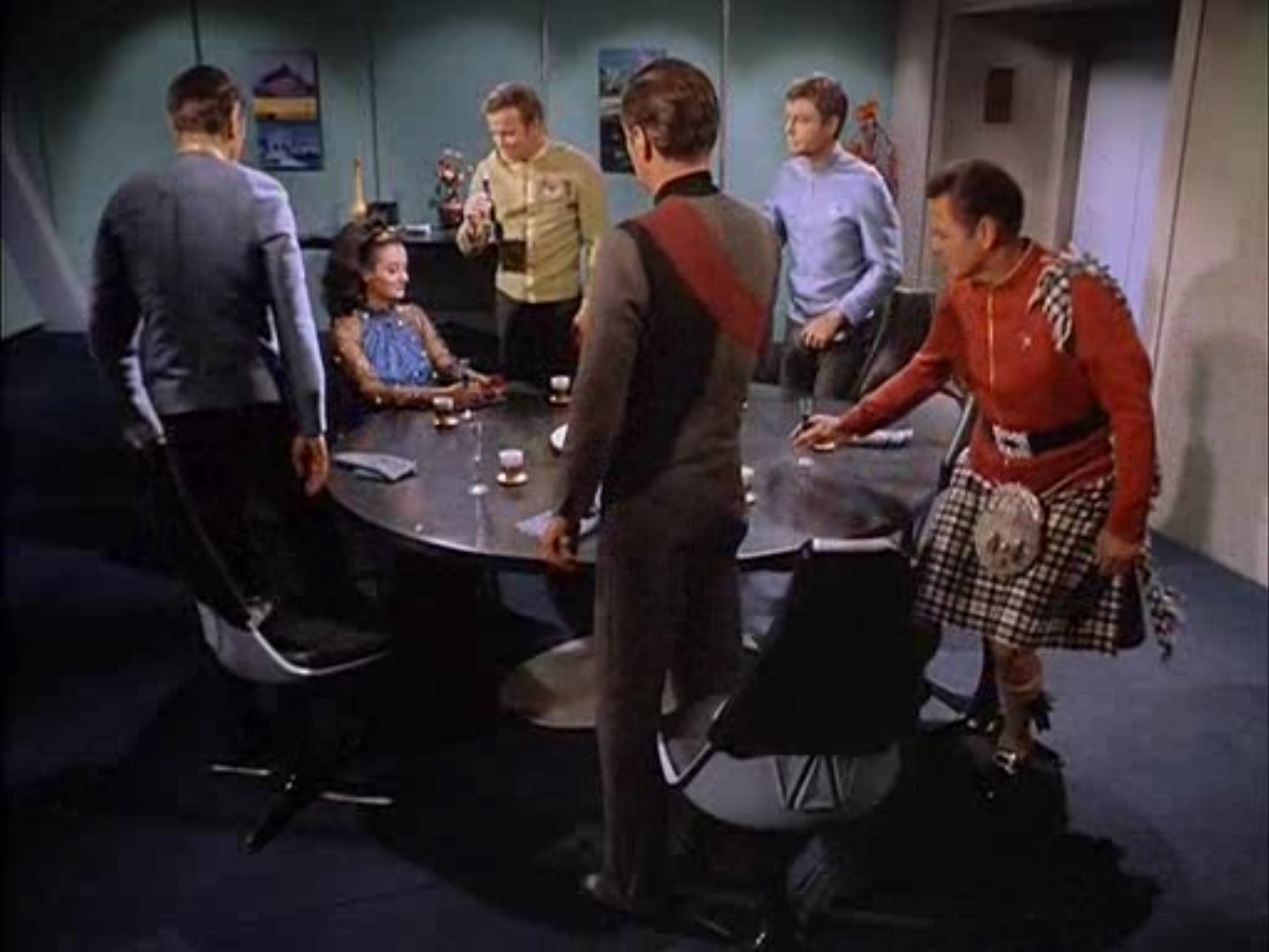
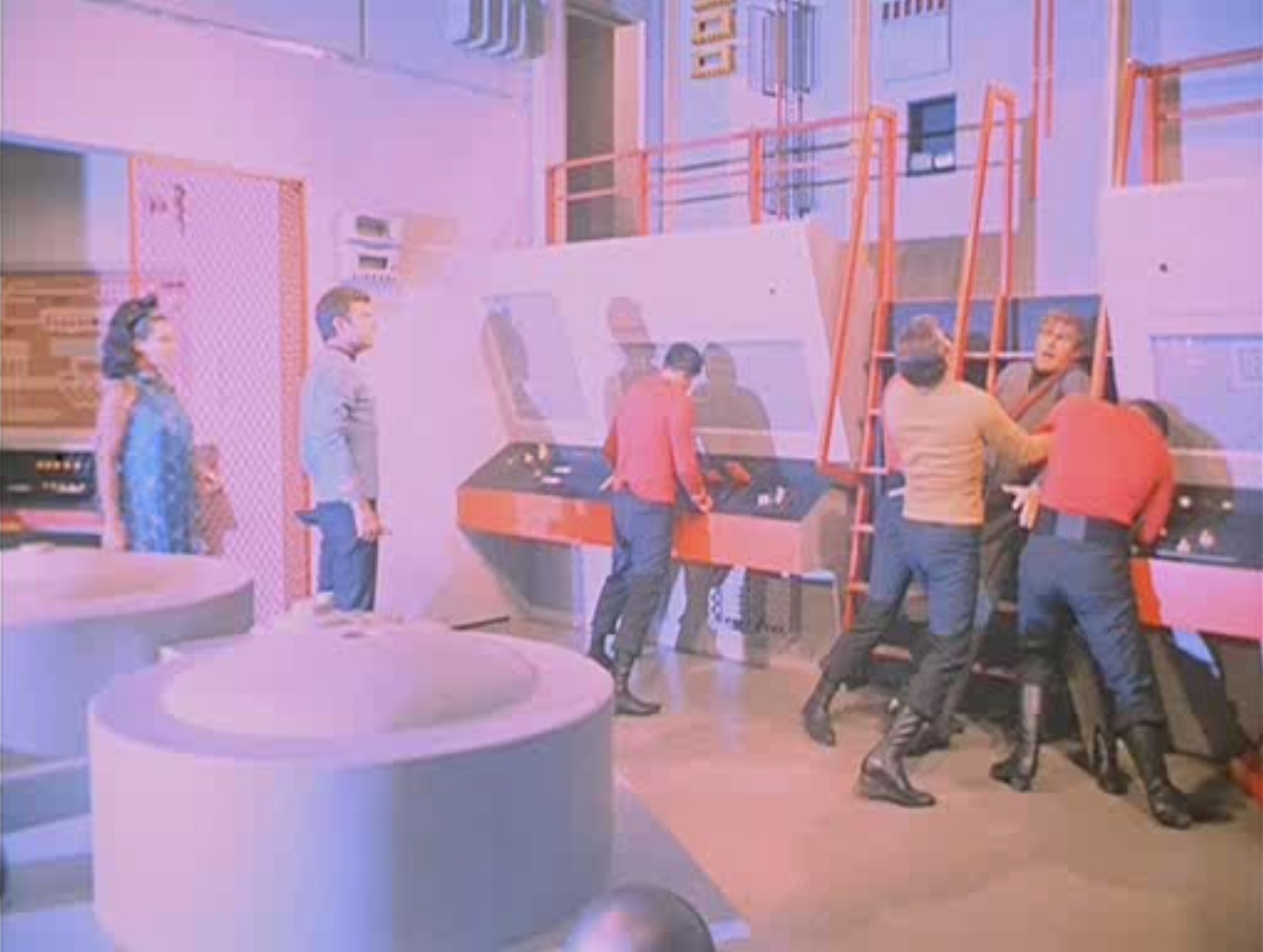
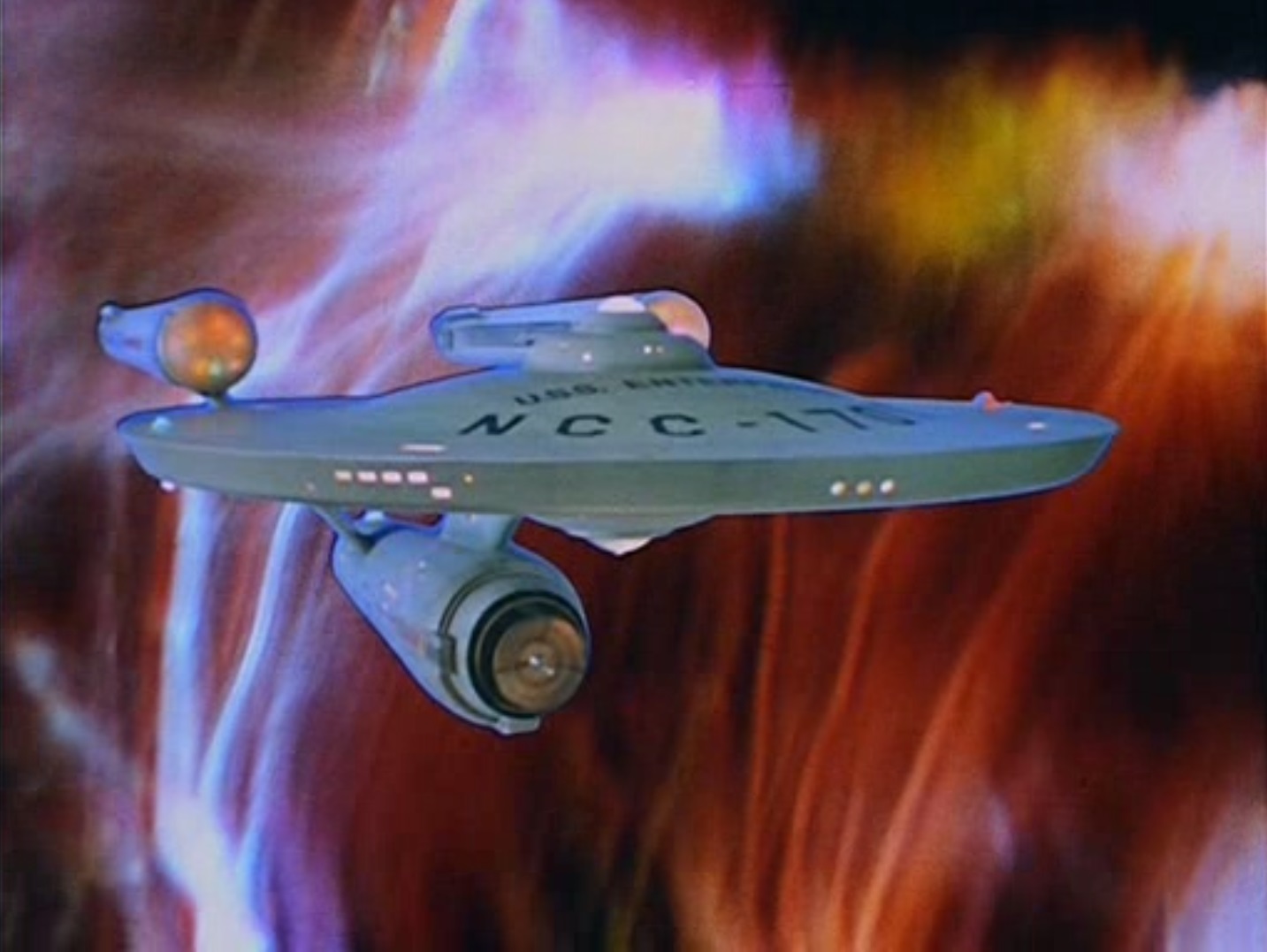
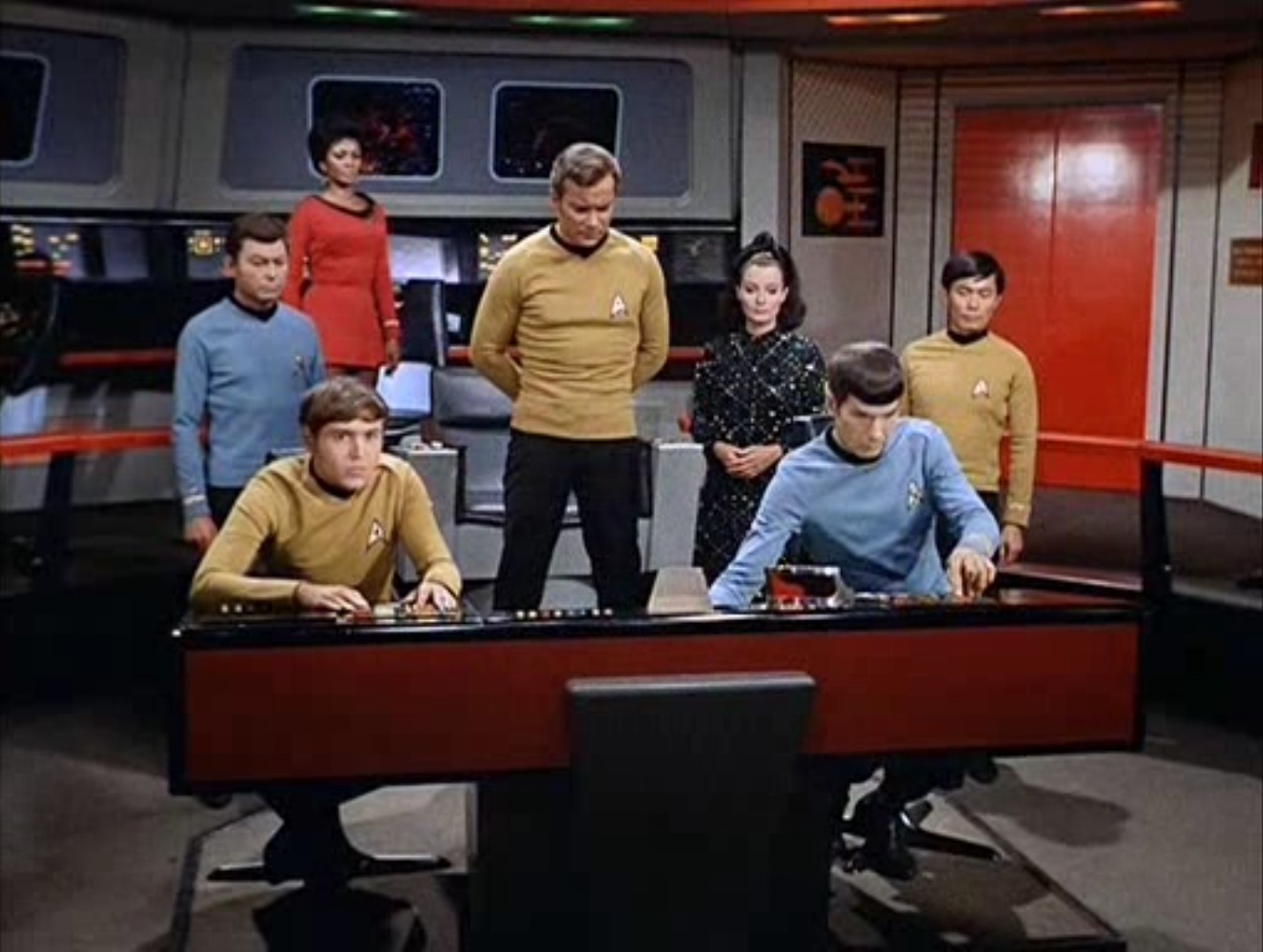



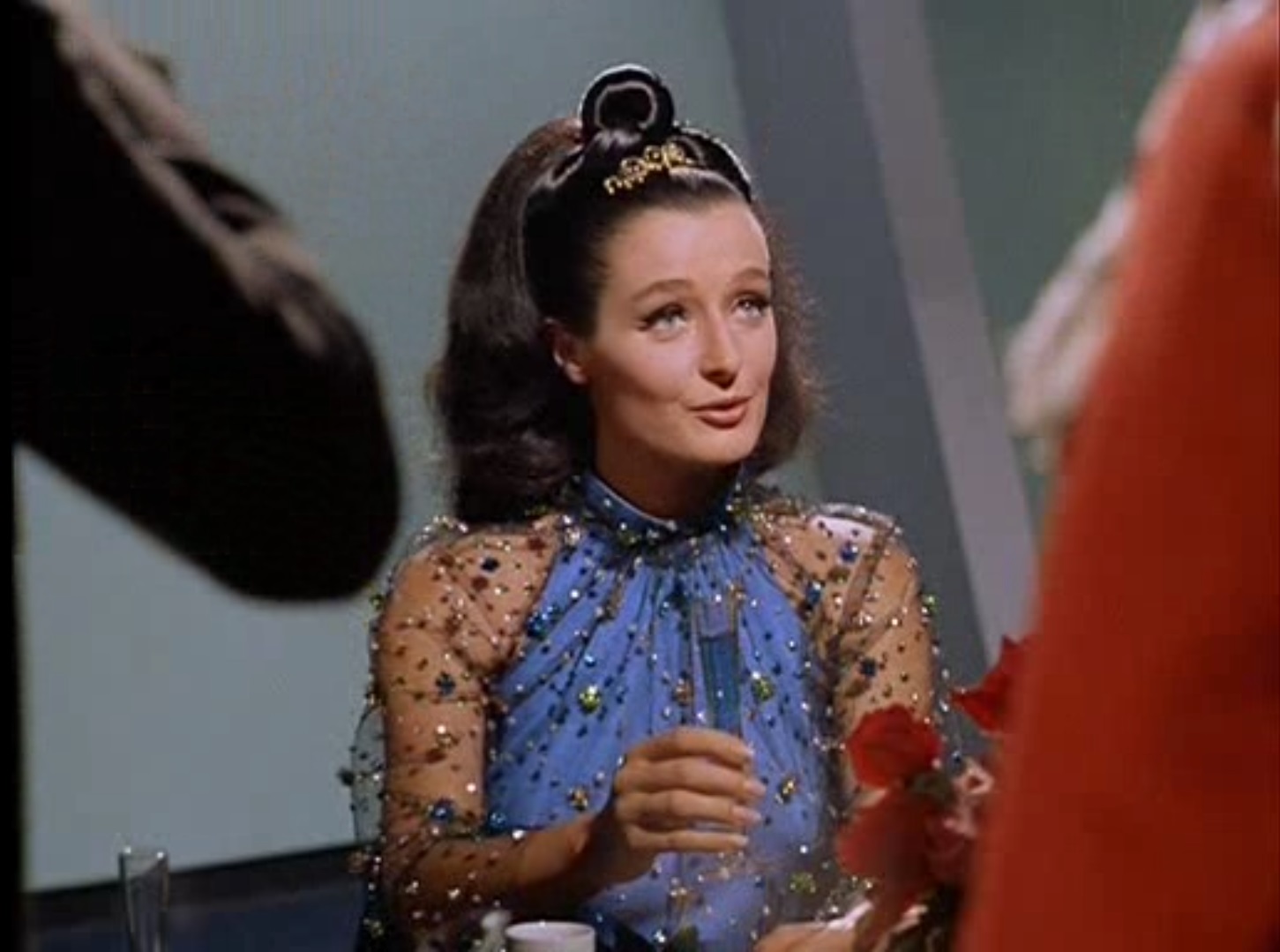



![[October 22, 1968] Hello Again! <i>New Worlds</i>, October & November 1968](https://galacticjourney.org/wp-content/uploads/2023/10/NW-October-November1968-672x372.jpg)

 Cover by Malcolm Dean
Cover by Malcolm Dean Disturbance of the Peace by Harvey Jacobs
Disturbance of the Peace by Harvey Jacobs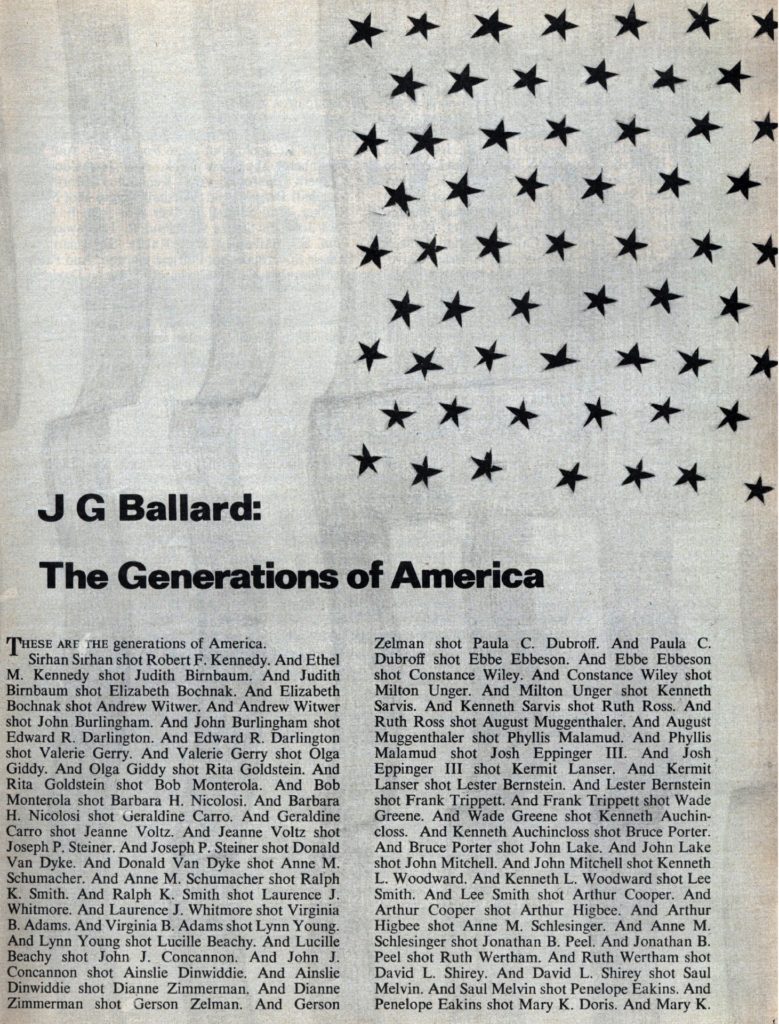
 Article: Into the Media Web by Michael Moorcock
Article: Into the Media Web by Michael Moorcock by Malcolm Dean
by Malcolm Dean Biographical Note on Ludwig van Beethoven II by Langdon Jones
Biographical Note on Ludwig van Beethoven II by Langdon Jones And again, something that’s been missing from recent issues, those pictures of strange artwork. This new version has buildings with patterns of light and shadow – and of course, a naked lady. No explanation – I guess we are just meant to be inspired – or aroused. 2 out of 5.
And again, something that’s been missing from recent issues, those pictures of strange artwork. This new version has buildings with patterns of light and shadow – and of course, a naked lady. No explanation – I guess we are just meant to be inspired – or aroused. 2 out of 5. Ah, poetry. 3 out of 5.
Ah, poetry. 3 out of 5.
 Cover by Gabi Nasemann
Cover by Gabi Nasemann Area Complex by Brian Vickers
Area Complex by Brian Vickers Pauper’s Plot by Robert Holdstock
Pauper’s Plot by Robert Holdstock
 Black is the Colour by Barry Bowes
Black is the Colour by Barry Bowes How May I Serve You? by Stephen Dobyns
How May I Serve You? by Stephen Dobyns Crim by Graham Charnock
Crim by Graham Charnock Article: Graphics for Nova Express by Richard Wittern
Article: Graphics for Nova Express by Richard Wittern Sub-Synchronization by Chris Lockesley
Sub-Synchronization by Chris Lockesley Baa Baa Blocksheep by M. John Harrison
Baa Baa Blocksheep by M. John Harrison Book Reviews: The Impotence of being Stagg by R. G. Meadley and M. John Harrison
Book Reviews: The Impotence of being Stagg by R. G. Meadley and M. John Harrison 
![[October 20, 1968] Giants among Men (November 1968 <i>Fantasy and Science Fiction</i>)](https://galacticjourney.org/wp-content/uploads/2023/10/681020cover-672x372.jpg)



![[October 18, 1968] Little monsters (<i>Star Trek</i>: "And the Children Shall Lead")](https://galacticjourney.org/wp-content/uploads/2023/10/681018title-672x372.jpg)
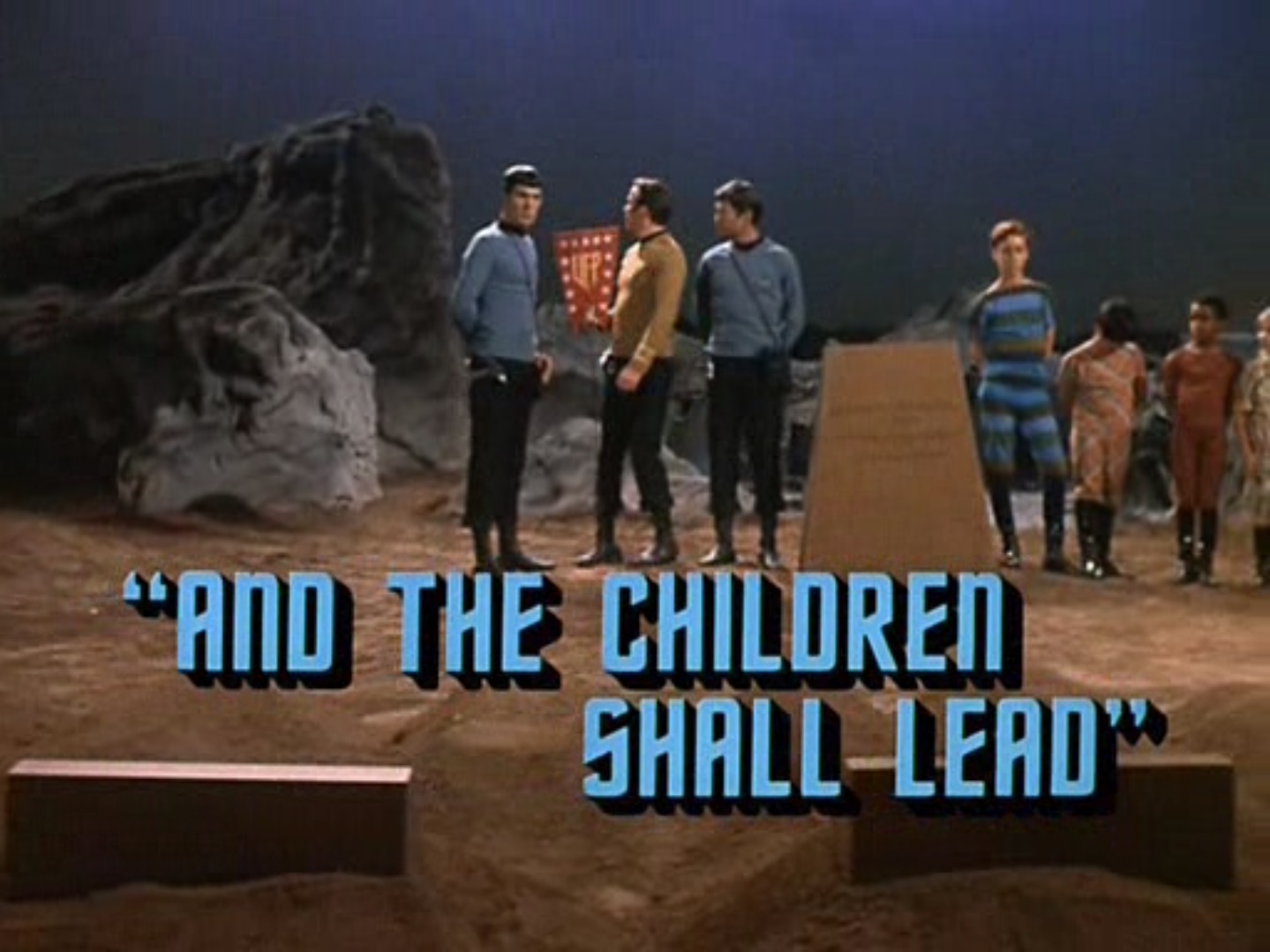
![[October 16, 1968] Cinemascope: <i>Barbarella</i>, <i>Ice Station Zebra</i>, and <i>Night of the Living Dead</i>](https://galacticjourney.org/wp-content/uploads/2023/10/681016movies-672x372.jpg)





































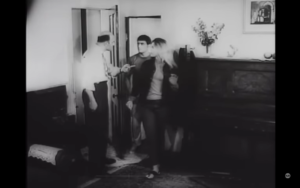






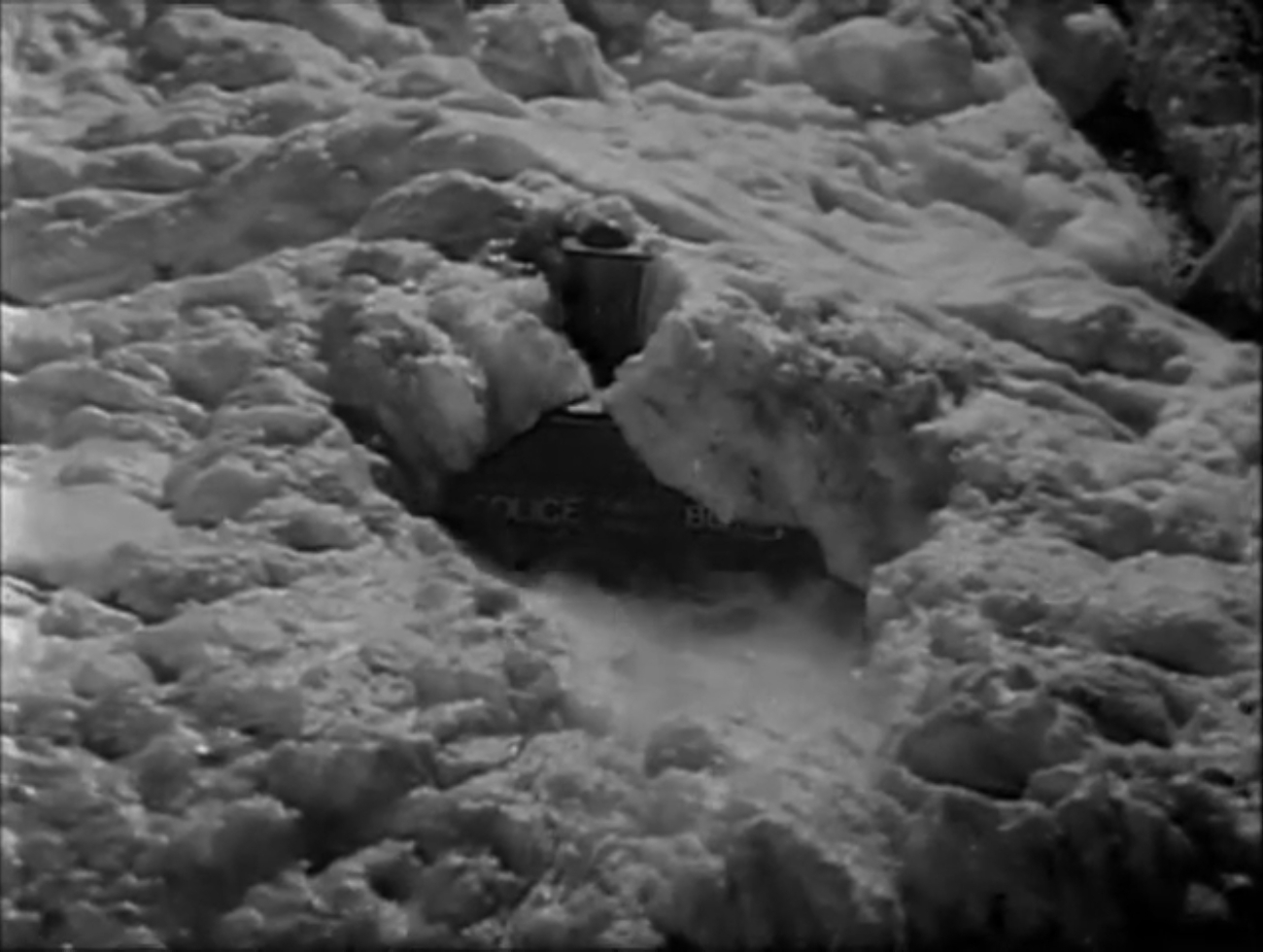
![[October 12, 1968] (October 1968 Galactoscope)](https://galacticjourney.org/wp-content/uploads/2023/10/681012covers-672x372.jpg)

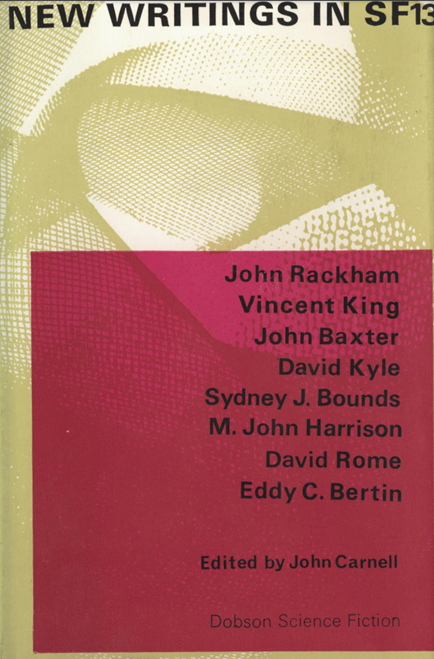




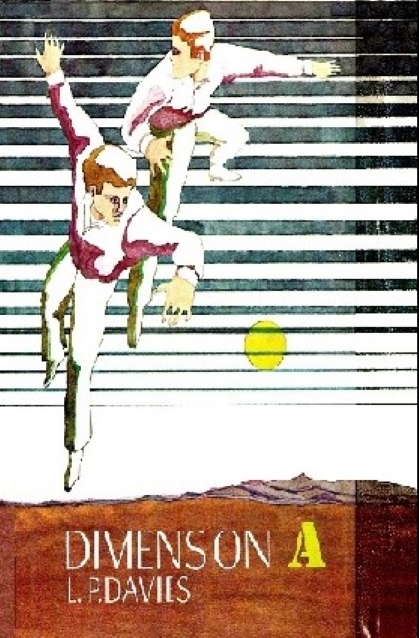


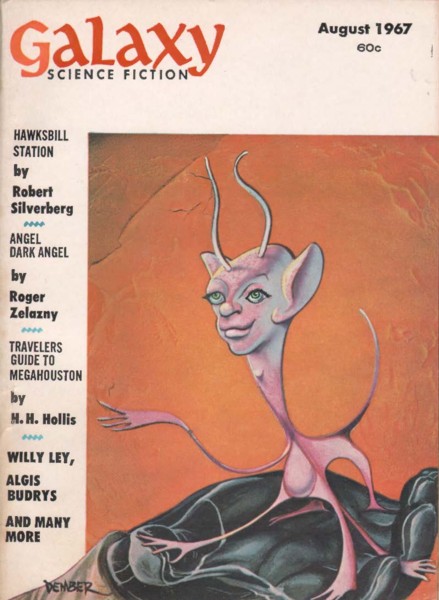






![[October 10, 1968] Going Native (<i>Star Trek</i>: "The Paradise Syndrome")](https://galacticjourney.org/wp-content/uploads/2023/10/681010title-672x372.jpg)








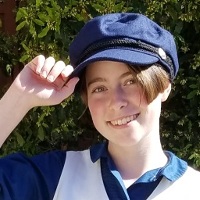





![[October 8, 1968] Probing the future (November 1968 <i>Galaxy</i>)](https://galacticjourney.org/wp-content/uploads/2023/10/681008cover-672x372.jpg)

